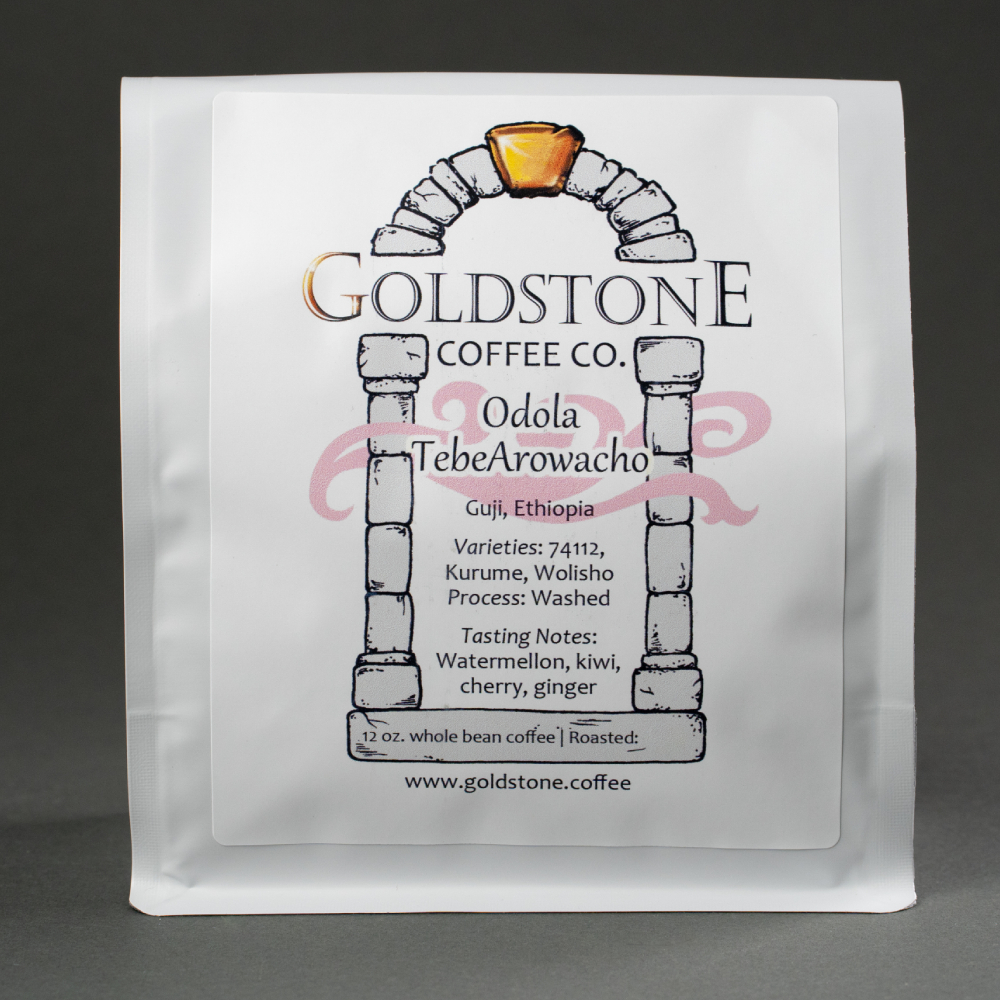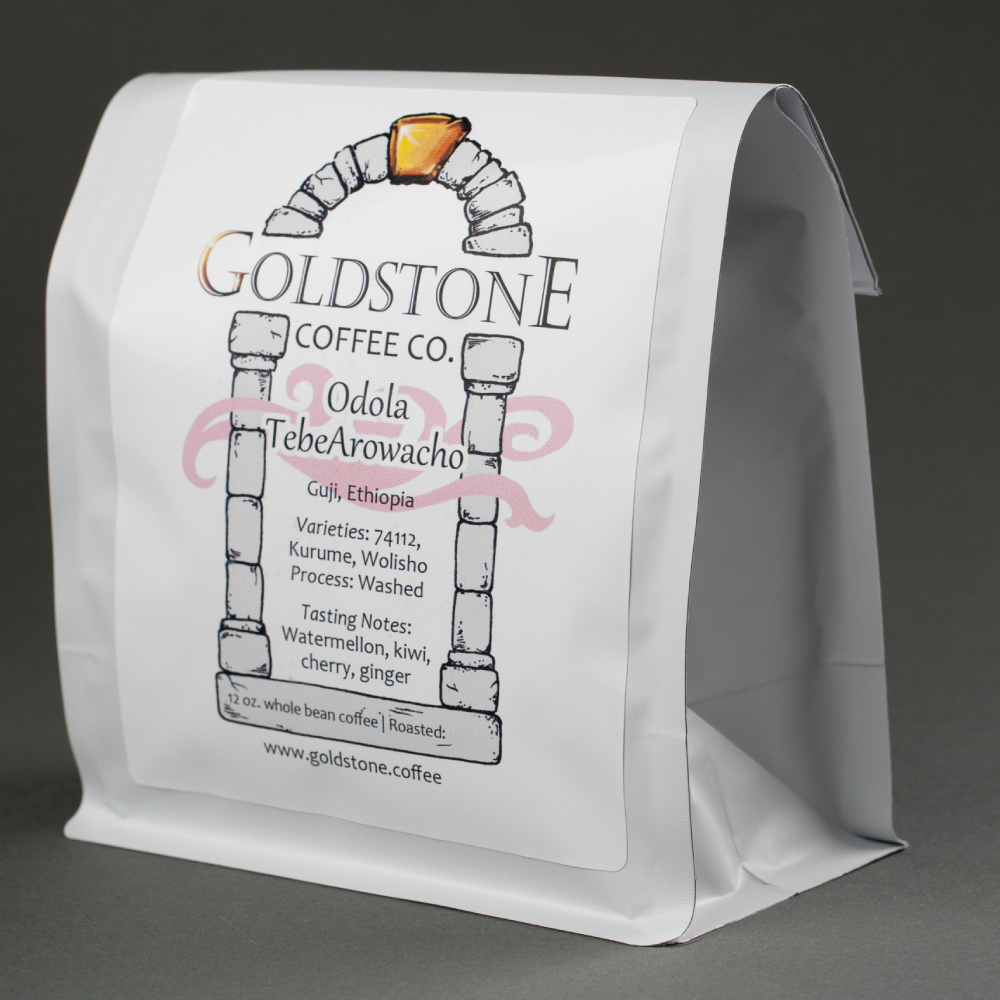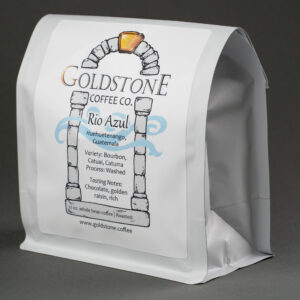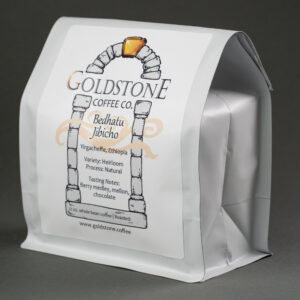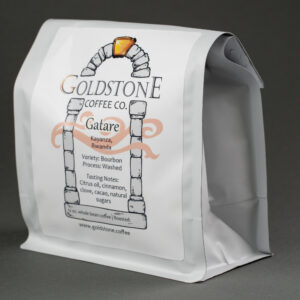Odola TebeArowacho
$19.00 – $126.00
I am thrilled to be able to bring this very special offering from the far South of the coffee growing areas of Ethiopia. Our friends at Catalyst Trade went to great lengths to acquire this washed coffee and we are blessed to be able to roast and present its goodness to you. Look for notes of watermelon intermingled with Kiwi and sweet cherry, a dose florality, and a hint of ginger for a pleasant zingy touch to top it off. This coffee sings, and I’m sure it will be as much a delight to you as it is to me.
COFFEE PROFILE
| Origin | Ethiopia |
| Region | Uraga, Guji Zone |
| Producers | Various smallholders around the Odolola TebeArowacho washing station |
| Variety | 74112, Kurume, Wolisho |
| Processing | Washed |
| Elevation | 2095-2122 masl |
| Taste | Watermellon, Kiwi, floral, Cherry, Ginger |
THE STORY
Go south, deep into the green hills of Ethiopia. Past Yirgacheffe. Past Sidama and into the red roads that draw you into the Guji Zone. Keep on going until you reach the densely forested, mountainous Uraga District where narrow dirt roadways are few and navigation is, well, shall we say, “challenging?” This is about as far south as coffee grows in Ethiopia, but it is more than worth the endless bouncing hours and challenging infrastructure.
The Uraga district offers up some of the highest elevations throughout Ethiopia, with coffees that are dense in structure, loaded with fruits and sweetness. These high elevations and dense cell structures mean slower ripening times, which translate to simply gorgeous coffees.
Many of the trees in this area are younger, having been introduced through the JARC (Jimma Agricultural Research Center) for particular cup quality in these microclimates. These varieties are identified by the numerical designations - 74110 and 74112. Other coffee varieties are numerous throughout these growing areas and are predominantly Ethipian heirloom varieties along with what are sometimes referred to as “Landrace,” a term for naturally adapted local varieties.
THE PRODUCERS:
Outgrower farmers from the Uraga area bring their ripe red cherries to the washing station, where coffees are accepted or rejected based on quality and then sorted by hand before pulping. Like in most of Ethiopia, growers in the Uraga district are smallholders, aka “garden farmers,” so called because most of them are producing coffee in the “garden” areas around their homes, and often harvesting cherries from coffee occurring naturally on the surrounding land where they live. Farm sizes tend to be between .5 to 2 hectares in size on average, though occasionally can reach upwards of 10 hectares. The average yearly yield in green coffee from one of these smaller farms is around 2 to 4 bags.
THE WASHING STATION:
The Odola TebeArowacho washing station, built in 2016, is situated at 2095-2022 MASL, and the community of farmers in the area been growing coffee for generations, and their cultivation and harvesting know-how shows up in their coffees and in their willingness to learn new ways to improve. Maintaining a good relationship with the washing station is key, which thanks to the hard work of the farmers is able to produce an average of 15 containers of processed coffee a year, 60% of that is washed process and the balance, natural process. As the cherries begin to ripen in October- December, producers begin picking and transporting their ripe cherries. It is not unusual to see them carried in baskets or bags on their own shoulders, or loaded on a donkey or even by handcart.
THE GUJI ZONE
The Guji Zone of Southern Ethiopia pushes up against the lush zones of Sidama and West Arsi to the north, to the Bale Zone in the east, and to the famous Gedeo Zone to the West. Given their closeness, Guji and Gedeo Zones share many crossover characteristics in coffee processing and production, resulting in similar bright, sparkly coffees with heavy floral notes and an overall delicacy. Oromiffa is spoken in West Guji, with a fair sprinkling of Gedeo. Both are Semitic languages like most of the 82 tribal tongues spoken around Ethiopia.
As in the Gedeo Zone, coffees in Guji are grown under shade trees that include enset (false banana), wanza (an indigenous African tree that grows near water sources and is used for fuel, tools, and furniture, with its leaves being used to fertilize crops), bamboo, and avocado.
Rather than being grown on single-producer estates (not often found in Ethiopia), coffee in the Guji Zone is almost always purchased by agents at washing stations from nearby farmers who pick from their back yards, where coffee flourishes wild as a cash crop among others such as mangos and bananas.
Unlike in many other coffee origin countries, producers do not hire a mix of transient and year-round workers to pick cherries. Instead, coffee farmers pick their own crops, aided by family members. Washing stations often pay a premium to the producer for selling ripe cherries only.

